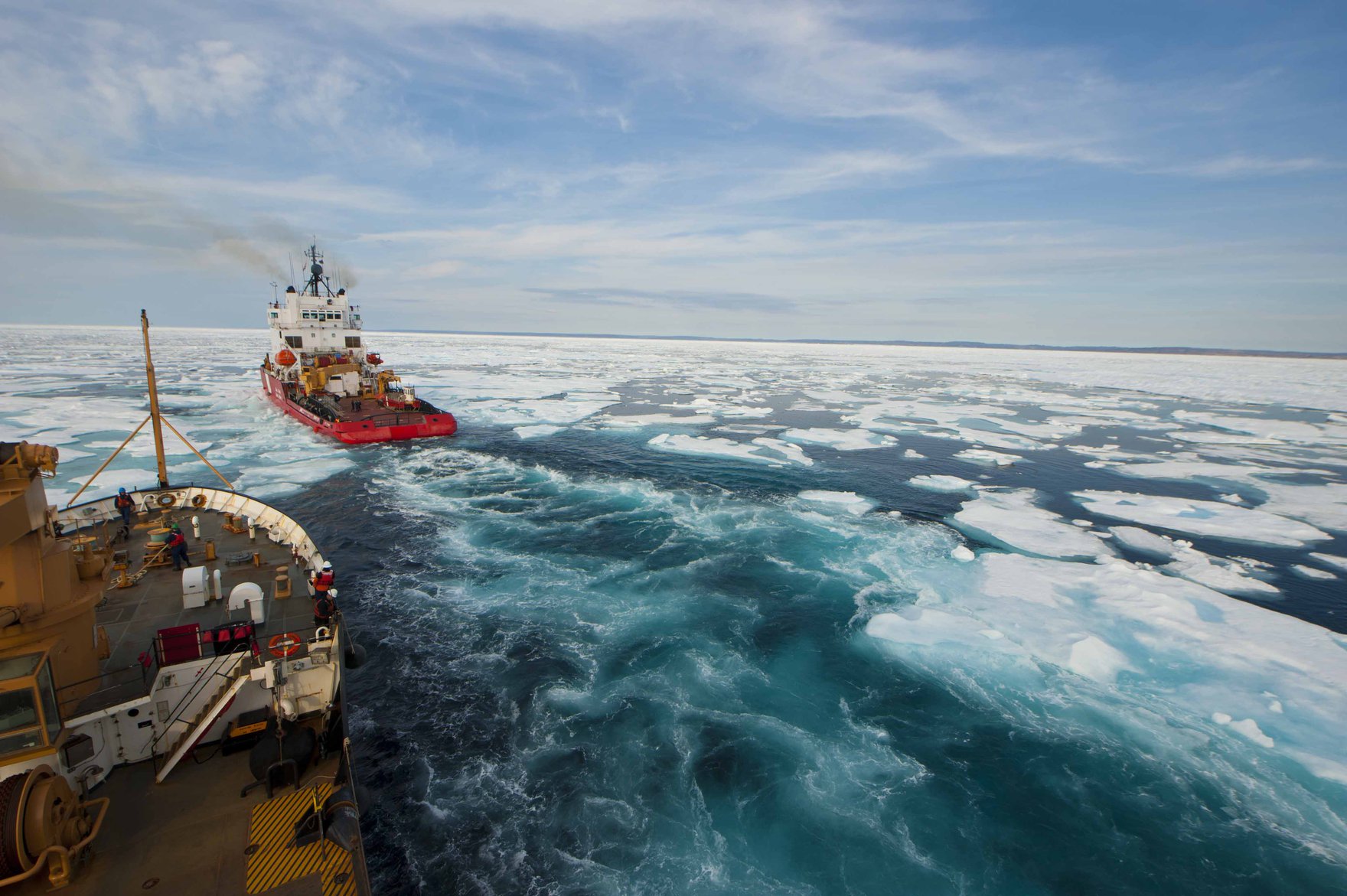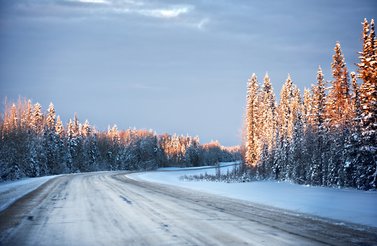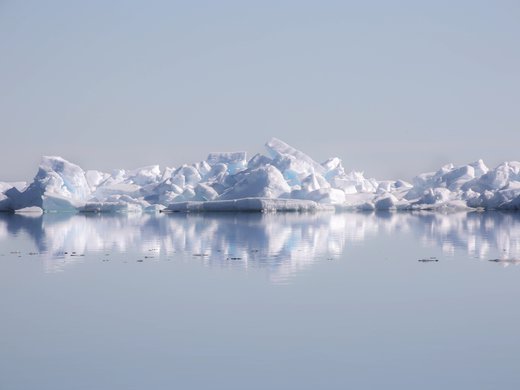Canadian Prime Minister Justin Trudeau’s government is set to release its much-awaited Arctic strategy this summer or fall, and policy makers are keenly waiting to hear whether it will have substantial domestic and international elements.
The soon-to-be-released framework is generating quite a bit of buzz in some circles as a convergence of trends — the emergence of climate-change-induced Northern shipping routes across the Arctic Ocean and the materialization of new energy extraction technologies, to name but two — drive an increased interest in the region.
These developments have resulted in varying investment interests vying to extract natural resources, such as uranium, iron ore and natural gas, throughout the otherwise hostile Northern expanses. China, in particular, has made significant energy-focused allocations in Canada, Greenland, Russia and Iceland.
The jockeying is leading to a clash between those who want investment in the region to grow Canada’s economy and others, in particular, environmentalists, who worry about systemic risks associated with accidents at mines and Northern, seagoing cargo vessels.
Mark Rosen, general counsel at CNA Analysis and Solutions, a research institute based in Arlington, Virginia, notes that Chinese energy-related investments in Canada “appear to be on the rise.” This increase is occurring despite some factors that appear to discourage investment in the region: a recent moratorium on oil and gas activity and a failure to develop new pipelines to tidewater.
In fact, Chinese investments represent 2.44 percent of Canadian GDP and came to Canada through 107 transactions between 2012 and 2017. The average deal value was $442.1 million, totalling $47.3 billion invested over the period. China’s allocations represent 11.6 percent of GDP in Greenland, 5.7 percent in Iceland and 0.9 percent in Norway. In Canada, for example, China has invested in Arctic mine sites and Canadian oil and gas activities.
“Why do we care about China’s investments?” Rosen asked. “Money is power — the question is, will large amounts of money going into projects in the Arctic result in a country losing its autonomy or its sovereignty to make its own decisions because it is captured by the investors?”
Rosen, who spoke at a Wilson Center event in Washington, DC, about a paper he co-authored with CNA researcher Cara Thuringer, also asks whether resource investments in the area are being made in a sustainable fashion that will protect local inhabitants and the environment.
Many observers are concerned about the impact of mining and other energy-related investments in the region, including those made by China, partly because Arctic developments will occur on or near the water. For example, resources extracted from mining, oil and gas projects in the region will depart by ocean-going vessels. This activity presents serious risks, not only at the project site, but away and in transit.
While Rosen expressed concern for the usual standards being upheld — high-quality construction developed with safety and the environment in mind — the Arctic presents unique issues for the energy extraction industry, too.
Despite the steady increase in vessels shuffling oil around the region, there are no legal agreements to address liabilities for offshore accidents in the region. Regulatory authorities and coastal states have a limited ability to dictate what happens outside of shipping. Further, the remoteness of the region could result in undetected spills, slow or ill-equipped spill responses, poor policing of unescorted ships and a lack of legal process following accidents or disputes.
Critics of the expanded investments from China and other investors (or resource extractors) in the region are hoping Canada’s policy framework will include a detailed international component focusing on investments in the Arctic. However, the policy is expected to focus more on domestic issues. A key reason: Trudeau has made reconciliation with Canada’s Indigenous people, one of his 2015 campaign promises, a priority.
“It is a people-first strategy that is being co-developed with Indigenous groups, people of the North,” said Lindsay Rodman, an international affairs fellow at the Council on Foreign Relations.
As a result, Rodman argues that Canada’s position on international issues may not receive the same emphasis as domestic issues in the framework.
“The one sort of negative aspect of all of this probably for the folks in the room [is that] this domestic component is so important in Canada that [despite] the ambitions of this document to satisfy both domestic and international questions[,] those international questions may be sublimated to the priority that has been given to the domestic,” Rodman, who also spoke at the Wilson Center event, said.
At best, it is unclear whether Canada will provide the funding necessary to meet the vast requirements of the North as part of the country’s new strategy. Rodman argued that it was more likely that Canada will instead try to focus on the needs of the people of the North, including some infrastructure improvement and health care.
John Higginbotham, a senior fellow at the Centre for International Governance Innovation and at Carlton University, agreed that the Canadian Arctic Policy framework will likely focus on social issues, reconciliation with Indigenous people, climate change and conservation, and will include some modest economic development projects. However, he does not expect it to focus on big strategic infrastructure projects in the North or on China’s investment.
That said, the Canadian plan will still have a significant international component, focusing on defense and security, although it is unclear whether Canada will take a strong international position on climate change.
“Since the United States is not in a position to take on leadership in that area, and the need is so dire, there is a void that the world really needs Canada to fill,” said Rodman.
In the vacuum that currently exists, Canadian Northern territories, including Nunavut, are already developing their own subnational relationships with China.
“They’re trying to get more investments there,” said Rodman. “That’s an interesting development as we think about China’s influence in North America as much as in Greenland and in North America.”
Higginbotham said he expects China to continue to invest at some level in Canada, where low political and economic risk exists. However, he added that there are serious obstacles in Canada that likely will discourage large-scale Chinese investments. “China wants big infrastructure projects and it wants to send its own employees to do them,” said Higginbotham. “That is not going to be accepted by the Canadian government or public.”
In addition, a 2016 agreement between Trudeau and the Obama administration that imposed a five-year moratorium on oil and gas activity in the Arctic creates another obstacle to Chinese investment. Finally, Canada’s inability to develop pipelines to tidewater is another risk factor for China capital allocations.
“Don’t exaggerate the success of China’s outreach to Canada,” he said. “They have many global options and aren’t expected to invest heavily in Canada any time soon.”
Nong Hong, executive director of the Institute for China-America Studies, points to a white paper produced by the Chinese government in January that focuses on environmental sustainability and scientific cooperation and research with Iceland, Norway and Denmark. In addition, in an attempt to counter concerns about China’s investment in the region, Hong argued that China has no vote on the Arctic Council, that has helped its eight member states negotiate legally binding agreements for cooperation in the region.
Nevertheless, opponents of Chinese investments and those concerned about environmental impacts of those allocations are hopeful that Canada and other Arctic countries will create an Arctic development bank, organized and funded by regional states with a series of responsible lending principles, as an alternative source of capital to China’s direct investments.
Proponents of the bank idea insist that such an approach is necessary because the Arctic Council and its member countries — Canada, Denmark (including Greenland), Finland, Iceland, Norway, Russia, Sweden and the United States — are not able to ensure that Chinese and other foreign investments are made in an environmentally responsible way.
Backers suggest that the bank’s funding source could include some private investors, in the minority, with countries providing guarantees should a loan go into default. In addition, the bank would ask for collateral from borrowers, to ensure that it doesn’t have to eat the cost if the project fails.
“The bank would have as its charter the responsible economic development of the Arctic and could lend to public or private entities involved in resource extraction, infrastructure, shipping, fishing and perhaps other activities,” Rosen said.
For example, when it came to mines, a loan condition could require that capital be posted at the beginning of the extraction to cover decommissioning costs once the vein runs dry. “It is the quickest way to get good environmental standards in place,” Rosen said. “The point is to provide an alternative to cheap Chinese money and to quickly blanket the area with sound environmental and labour practices.”
However, Higginbotham said he was skeptical that such an Arctic development bank could be created, partly because Northern countries and stakeholders would never agree to a common set of lending priorities.
“What exactly is the Arctic? Where is the risk money coming from? How does it relate to existing government investing? What kind of energy and infrastructure companies would be recipients of the loans?” Higginbotham asked. “China has an enormous pool of capital expertise and demand and would be an attractive partner theoretically for Canadian Arctic development but the [Canadian] politics is not going to allow it.”
For now, potential investors, environmentalists, and the proponents and opponents of capital allocations in the North are mostly in a waiting posture. The Trudeau government’s framework will not magically create a development bank in the region. However, the policy framework could send a message about Canada’s priorities for its Arctic archipelago and beyond.




